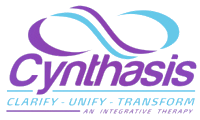 Self-regulation is different than self-control. Self-regulation is a holistic approach to experiencing our emotions and behaviors when faced with adversity, painful situations or being triggered by something someone says or does. It involves tuning into our feelings, understanding the trigger and responding in a way that is aligned with our values and goals. Self-control teaches us to dampen down our reactions and over time that can get harder and harder.
Self-regulation is different than self-control. Self-regulation is a holistic approach to experiencing our emotions and behaviors when faced with adversity, painful situations or being triggered by something someone says or does. It involves tuning into our feelings, understanding the trigger and responding in a way that is aligned with our values and goals. Self-control teaches us to dampen down our reactions and over time that can get harder and harder.Some of us have a harder time with self-regulation based on never having learned how to support our body’s shifts between a heightened state of alert and a calm state. Throughout our day we are constantly moving from an increase or decrease of arousal for regulation. Our ability to self-regulate started in our early years. How we were swaddled, rocked, fed, and our cues were read helped us learn to organize our states of arousal. Patterns and rhythms are developed. Regulation develops over time and with various interactions. How we were supported when having temper tantrums or tolerating sensations we did not like impacted our emotional and physical development. Regulation with the help of our caregivers set us up for self-regulation.
time and with various interactions. How we were supported when having temper tantrums or tolerating sensations we did not like impacted our emotional and physical development. Regulation with the help of our caregivers set us up for self-regulation.
Not all of us can tune in or are even aware that we are triggered. We may feel off and think there is something wrong with us, not connecting our sensations to the environment around us, the news we just heard, or the pain of another. Some of us are highly sensitive and barometer changes, star alignment and news can be felt even if we had no awareness The sensations we experience include but are not limited to an upset stomach, chest pains, rapid change of temperature in our body, or  feeling irritable, tired or short-tempered.
feeling irritable, tired or short-tempered.
Self-regulation can start with recognizing our sensations and then working with soothing ourselves much like loving caregiving. Rocking, gentle tapping, squeezing our arms from side to side, or smelling a favorite scent help us regulate. Let’s review more ways we can regulate. I like to think of integrating different parts of the brain when focusing on regulation. Regulation is part of our brain stem, but many systems are also involved. Let’s explore some movements that connect from the top down, bottom up, and side to side.
Top Down and Bottom Up Together
Observing sensations – Accessing through Cerebral Methods
Once we are aware of our sensations, we are less identified with them. Developing our inner observer is extremely helpful in many modalities. Mindfulness brings us into the moment and experience. Meditation helps calm our nervous system and prayer supports the integration of the moment, our personality, and knowing we are part of something greater than our busy worried mind.
We can start by tracking our sensations and getting to know which sensations are pleasant, neutral or unpleasant. Learning the difference and shifting focus supports our nervous system to regulation. “Where attention goes energy flows,” James Redfield. Observing and shifting help build new neuropathways.
Journaling and speaking out loud are great ways to release and find movement with thoughts. Our thoughts impact our emotions. What are you telling yourself? How are you seeing things in absolutes meaning something is right or wrong, good or bad all or nothing? Writing angry letters and burying or shredding them helps. Or consider questioning is that really so. Bryon Katie has a great four-question process when you get caught. https://thework.com/wp-content/uploads/2019/07/jyn_en_mod_6feb2019_r4_form1.pdf
Another use of words is through sound and mantras for self-regulation. Think of babies, before they spoke, they sounded. Ancient traditions use chanting for spiritual practice to strengthen community, healing illnesses and overall physiological and emotional balance.
practice to strengthen community, healing illnesses and overall physiological and emotional balance.
Movement Between the Right and Left
Rocking from side to side releases endorphins to self-regulate the brain, and improves sleep, memory, and focus. Plus, rocking activates the parasympathetic nervous system which reduces stress and anxiety.
Cross patterning in some form of shifting the opposite arm with the opposite leg and thinking about what you are doing integrates both hemispheres as well as the  thinking brain with movement. Studies have shown it improves cognitive function, memory and focus. I find it is extremely grounding. I will often encourage people to practice cross-patterning as we end a session. It also helps to improve overall physical health.
thinking brain with movement. Studies have shown it improves cognitive function, memory and focus. I find it is extremely grounding. I will often encourage people to practice cross-patterning as we end a session. It also helps to improve overall physical health.
Music and sound between the right and left hemisphere is often used in trauma work to help calm the nervous system reducing stress and anxiety. The music is listened to with headphones shifting between one ear and the other. The binaural beats sustained over a period of time have been shown to alter brain wave activity.
Tapping/Squeezing
The Butterfly Hug was developed by Lucina Artigas during her work with survivors of Hurricane Pauline in Acapulco, Mexico. It is used by many clinicians working with survivors of catastrophes-natural and man-made. You can do this in or out of therapy.
Tapping developed by Gary Craig works by stimulating the body’s energy meridian points. There are many you-tubes on tapping for specific issues. It has helped to re-balance and relieve emotional and physical distress.
Other movement modalities including and are not limited to yoga, Core Energetics and working out are extremely helpful. They are ways of bringing awareness into movement and supporting self-regulation as they help us shift from too much or too little energy back into balance. Consider while moving setting an intention to start and releasing sound as you move. Sound and movement are great forms of release and self-regulation. Much like a pressure valve we want to release and reset.
Shifting Our Eyes
We can get blindsided and lost in tunnel vision when we are triggered. Shifting our eyes can help us reset.
A favorite way to work with our eyes is called Vergence Therapy by Merrill Bowman
Another favorite I like to share is Stanley Rosenberg’s Basic Exercise.
Focus on any one of your senses. Smell has the most direct access to your amygdala. Try a scent you enjoy. Wear a few drops under your nose when you are heading to a stressful meeting or situation and take a deep breath whenever you need it to help you ground. For your other senses try some of these: look at a beautiful color or scene, touch something soothing, or maybe try a weighted blanket to sense structure and support. I went through a phase of using a heating pad to soothe me. Other times I like music, dancing or walking in nature. Other people prefer reading, puzzles, or counting things in the room to regulate. Whatever works for any one of your senses. When we bring our awareness to our senses, we help regulate our entire body.
Box Breathing – Breathing in for the count of four, holding for four, breathing out for four, holding four. This technique of equal amounts has a certain rhythm to it and encourages us to focus on our body rather than our thoughts.
Deep belly breathing invokes the parasympathetic nervous system which relaxes our central nervous system so we can rest into our bodies. Begin by breathing all the way down into your stomach up to your chest and slowly exhale out your mouth relaxing your stomach and chest before you take the next breath. You can add a sound on the exhale.
 If you feel out of balance focus more on the inhalation or exhalation. A shorter breath in and longer out helps letting go. If needing more energy try longer breaths in and shorter out.
If you feel out of balance focus more on the inhalation or exhalation. A shorter breath in and longer out helps letting go. If needing more energy try longer breaths in and shorter out.
Scanning your body from the top of your head to the tips of your toes is extremely grounding. I enjoy Yoga Nidra for a good reset.
More suggestions include Grounding Meditation, Self-Spotting and Grounding with Earth at Cynthasis – YouTube.
Let me know what helps you!



